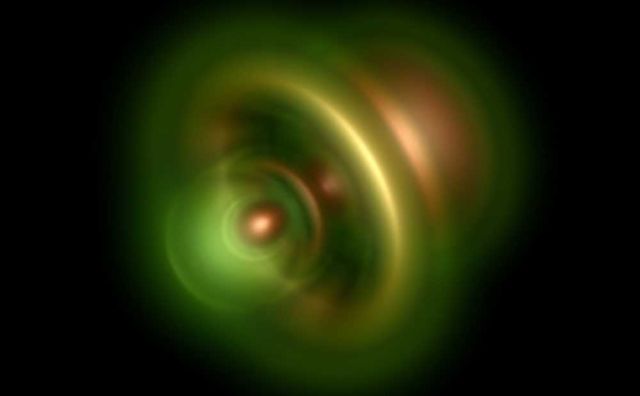For the first time physicists have recorded an internal atomic event with an accuracy of a zeptosecond.
When light strikes electrons in atoms, their states can change unimaginably quickly.
Laser physicists at LMU Munich and the Max Planck Institute of Quantum Optics (MPQ) have now measured the duration of such a phenomenon.
In photoionization, as they call it, an electron exits a helium atom after excitation by light, a phenomenon captured for the first time with zeptosecond precision.
A zeptosecond is a trillionth of a billionth of a a second (10-21 s).
Above, once a photon has ejected an electron from a helium atom, it is possible to calculate the probable position of the remaining electron. The most likely position of the electron is shown in the image as the brightest area around the atomic nucleus (which itself is not visible in the image). Image credit Schultze/Ossiander
Martin Schultze, a specialist in laser physics at LMU’s Chair of Experimental Physics, who led the experiments at the MPQ, said:
“Our understanding of these processes within the helium atom provides us with a tremendously reliable basis for future experimentsWe can now derive the complete wave mechanical description of the entangled system of electron and ionized helium parent atom from our measurements.”
via newatlas
source en.uni-muenchen






Leave A Comment